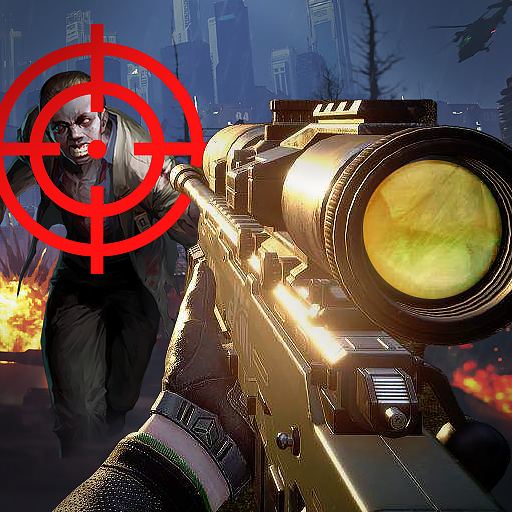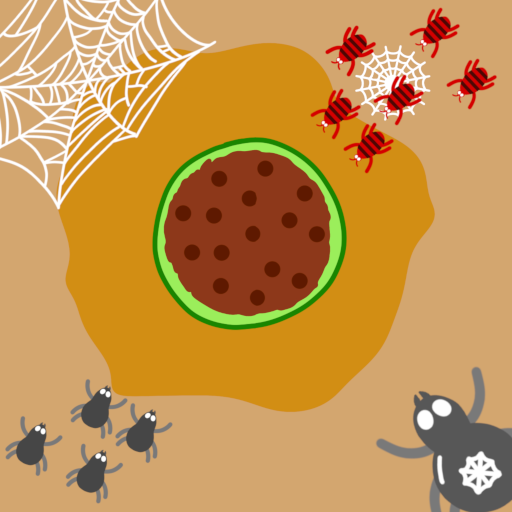When I first sat down to play developer MercurySteam's latest project, Blades of Fire, I anticipated a return to the studio's Castlevania: Lords of Shadow roots, perhaps updated with the modern stylings of God of War. However, after an hour of gameplay, I found myself immersed in what felt like a Soulslike experience, albeit one where the focus was on weapon stats rather than traditional RPG character development. By the end of my three-hour hands-on session, I realized that Blades of Fire occupies a unique space in the action-adventure genre—it borrows elements from familiar games, yet combines them with fresh ideas to create a distinct gaming experience.
While Blades of Fire may not be a direct clone of Sony Santa Monica's God of War, the similarities are striking at first glance. The game features a dark fantasy setting, powerful melee attacks, and a third-person camera that keeps you close to the action. Throughout the demo, which covered the game's opening hours, I navigated a labyrinthine map filled with treasure chests, aided by a young companion who assisted in solving puzzles. Together, we sought out a woman of the wilds living in a house atop a giant creature. The game also borrows heavily from FromSoftware's catalog, including anvil-shaped checkpoints that replenish health potions and respawn enemies when rested at. At times, the familiarity can feel a bit overwhelming.
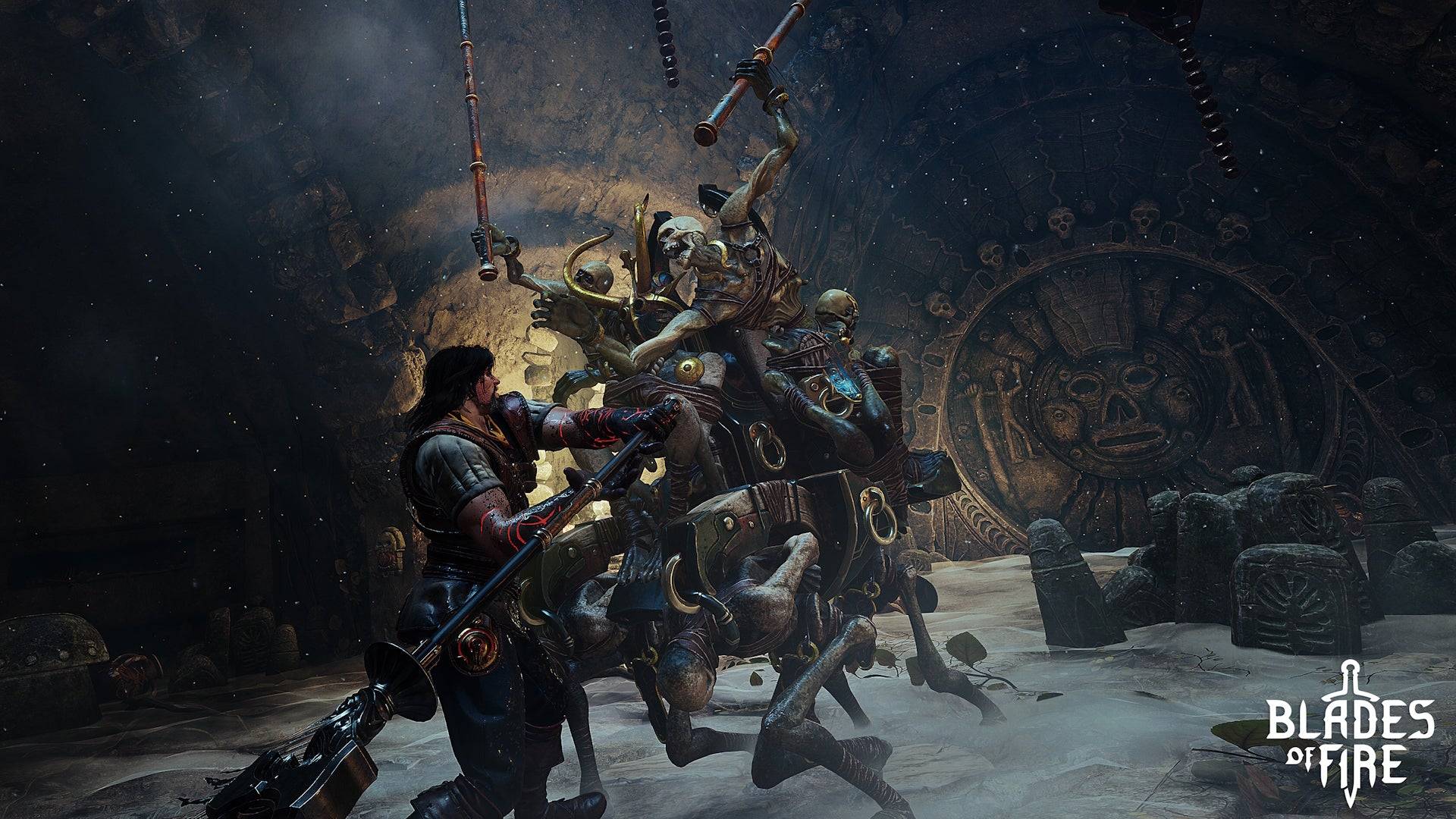 Blades of Fire features some deeply strange enemies that feel like dark cousins of Labyrinth's puppets. | Image credit: MercurySteam / 505 Games
Blades of Fire features some deeply strange enemies that feel like dark cousins of Labyrinth's puppets. | Image credit: MercurySteam / 505 Games
Despite these borrowed elements, Blades of Fire sets itself apart with a world that exudes a 1980s fantasy vibe. You can easily picture Conan the Barbarian fitting in among its muscular soldiers, while the quirky orangutan-like enemies bouncing on bamboo pogo sticks wouldn't seem out of place in Jim Henson's Labyrinth. The narrative also leans into this retro feel, revolving around an evil queen who has turned steel into stone, leaving it to you—Aran de Lira, a blacksmith demigod—to defeat her and restore the world's metal. Although the setting and premise have charm, I'm skeptical about the story, characters, and writing holding my interest over the long haul; it feels very video game-y, reminiscent of many forgotten tales from the Xbox 360 era.
Where Blades of Fire truly shines is in its mechanics. The combat system is built around directional attacks that utilize every face button on the controller. On a PlayStation controller, for instance, triangle targets the head, cross aims for the torso, and square and circle swipe left and right. By carefully observing an enemy's stance, you can use these attacks to break through defenses. A soldier holding a blade to protect their face, for example, can be defeated by aiming low and piercing their gut, resulting in a satisfyingly squelchy impact with vivid blood effects.
Certain encounters highlight the brilliance of this system. In the demo, the first major boss—a slobbering troll—had a secondary health bar that could only be depleted after dismembering it. The limb you sever depends on your attack angle, allowing you to strategically detach its club-swinging arm with a right-hand strike, effectively disarming your opponent. Even more intriguing, you can slice off the troll's entire face, leaving it blind and flailing until it regrows its eyes and resumes the fight.
In Blades of Fire, weapons require meticulous attention, a feature that sets the game apart. The combat system includes interesting mechanics like manually restoring your stamina gauge by holding the block button, rather than it regenerating automatically. Despite these novel ideas, the overall feel of combat echoes that of Souls games, with its emphasis on attack pattern recognition and tight dodge/block/parry windows. This similarity can trigger FromSoftware muscle memory, but it won't suffice here; the directional attack system necessitates a different control setup, with blocking reassigned to the left trigger.
Once I adjusted to the unique controls, the combat mechanics began to stand out from their Soulslike counterparts. The weapon system elevates the core combat experience, allowing you to wield your blades in different stances—either slashing with the edge or thrusting with the tip. Assessing your enemy and using HUD prompts helps determine the most effective approach.
Blades of Fire Screenshots
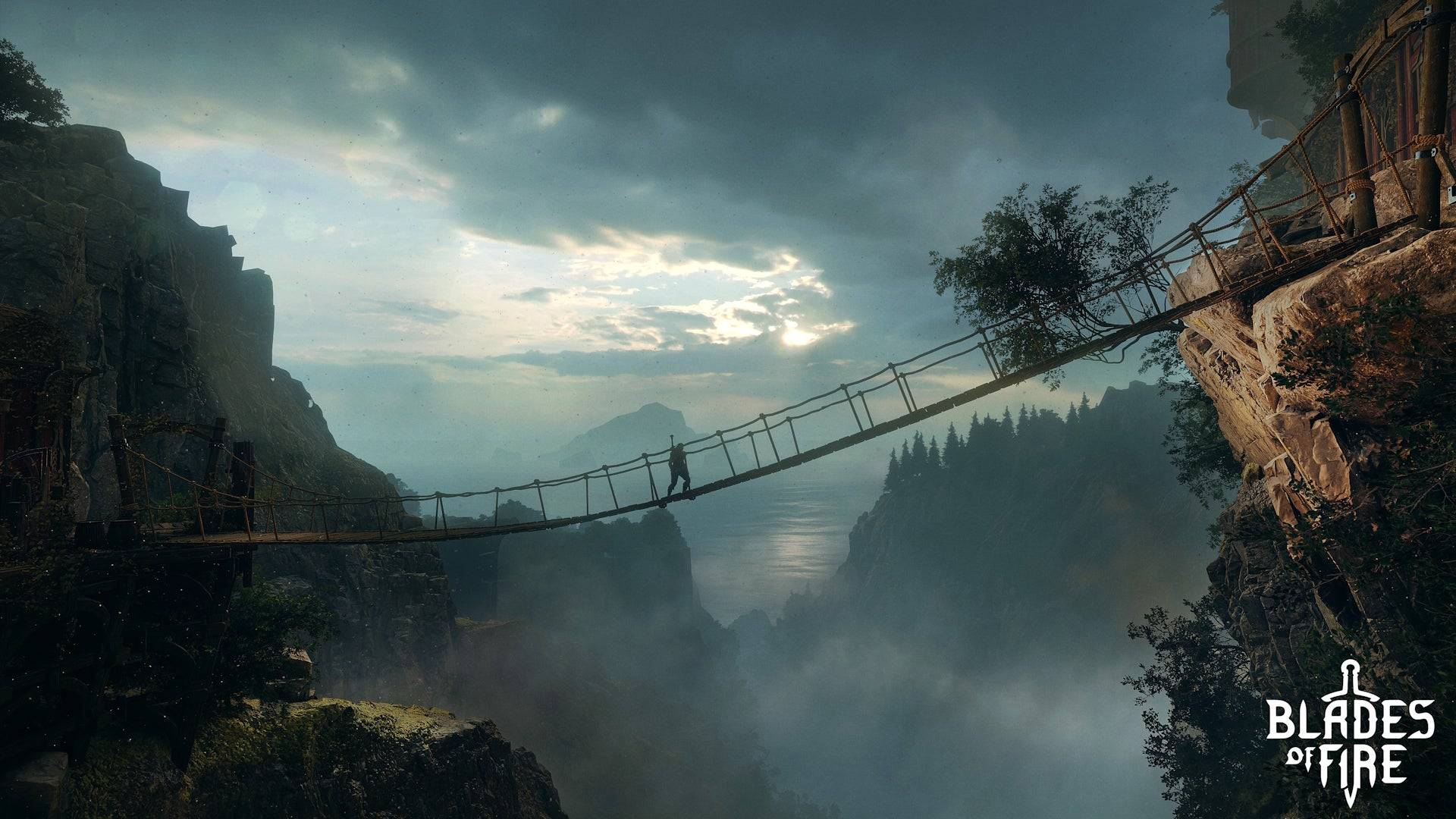
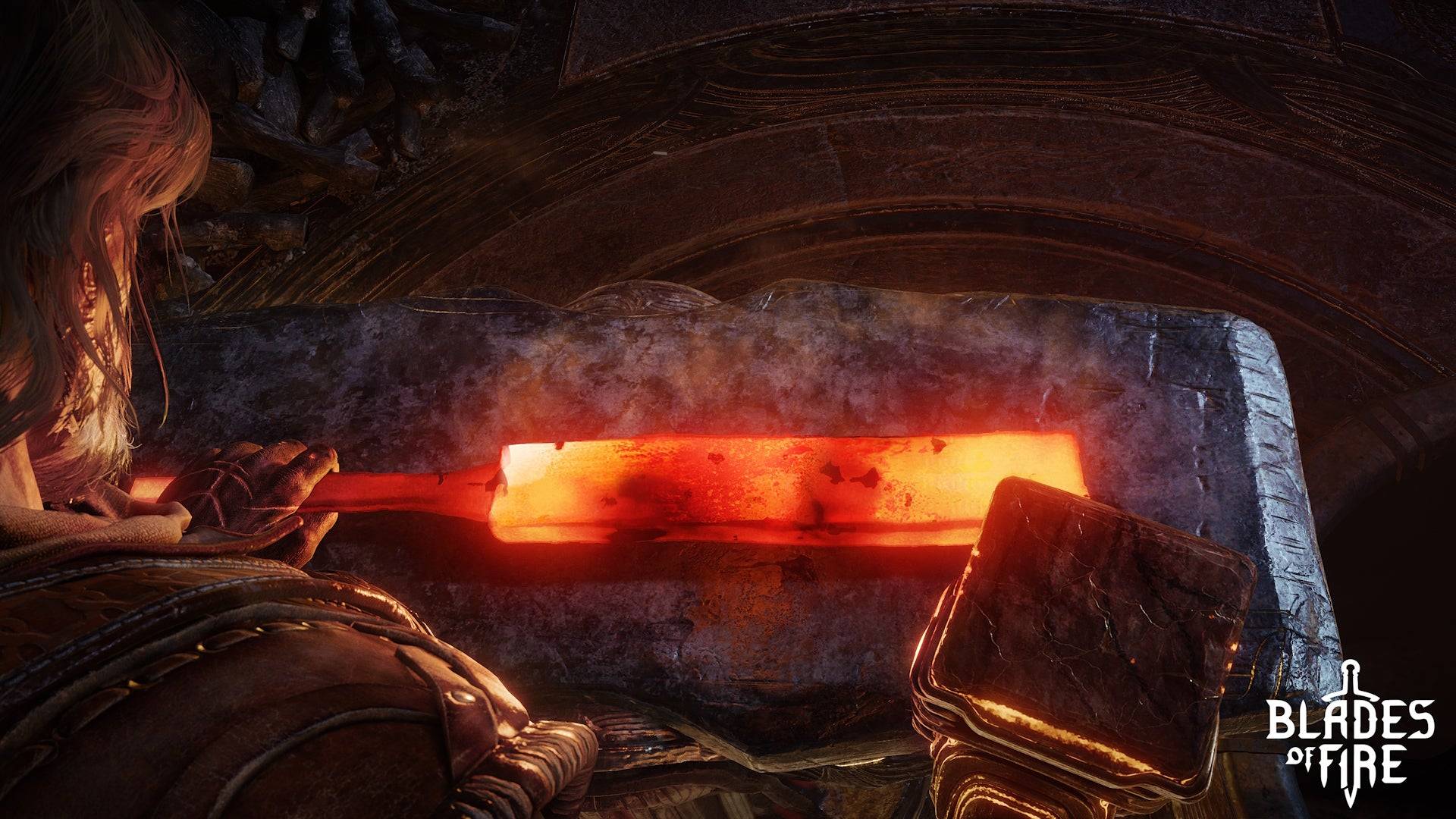 9 Images
9 Images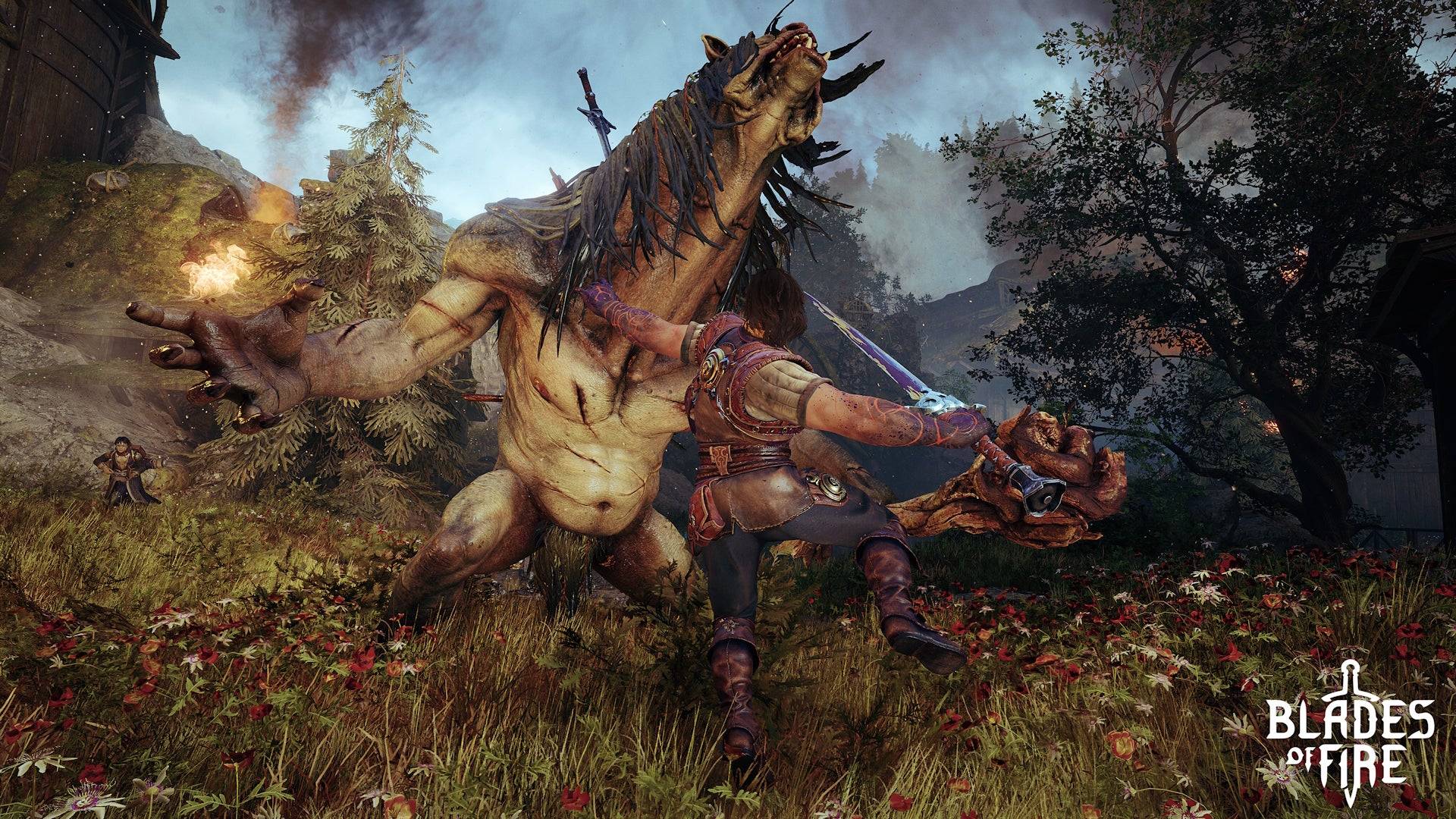
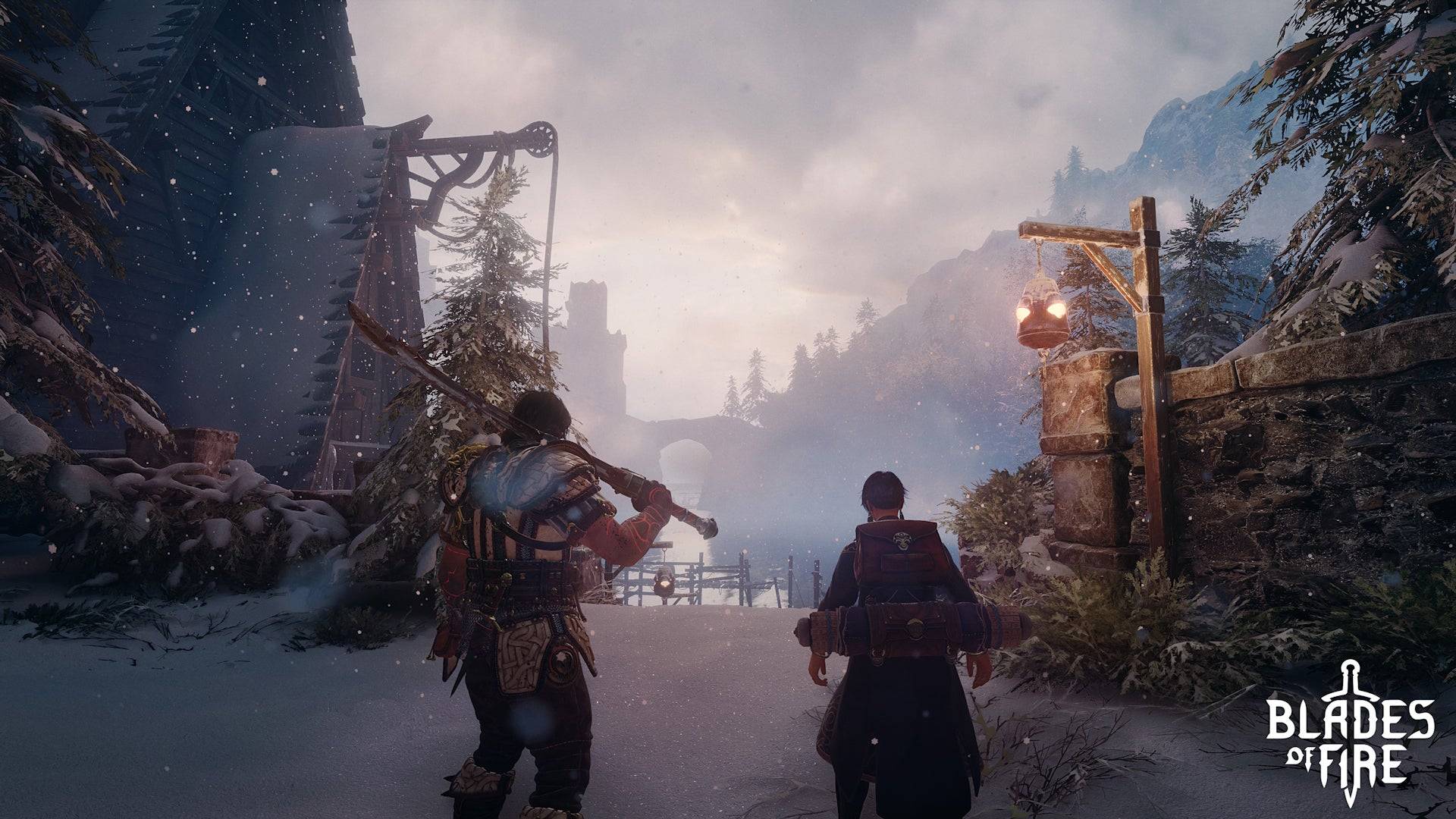
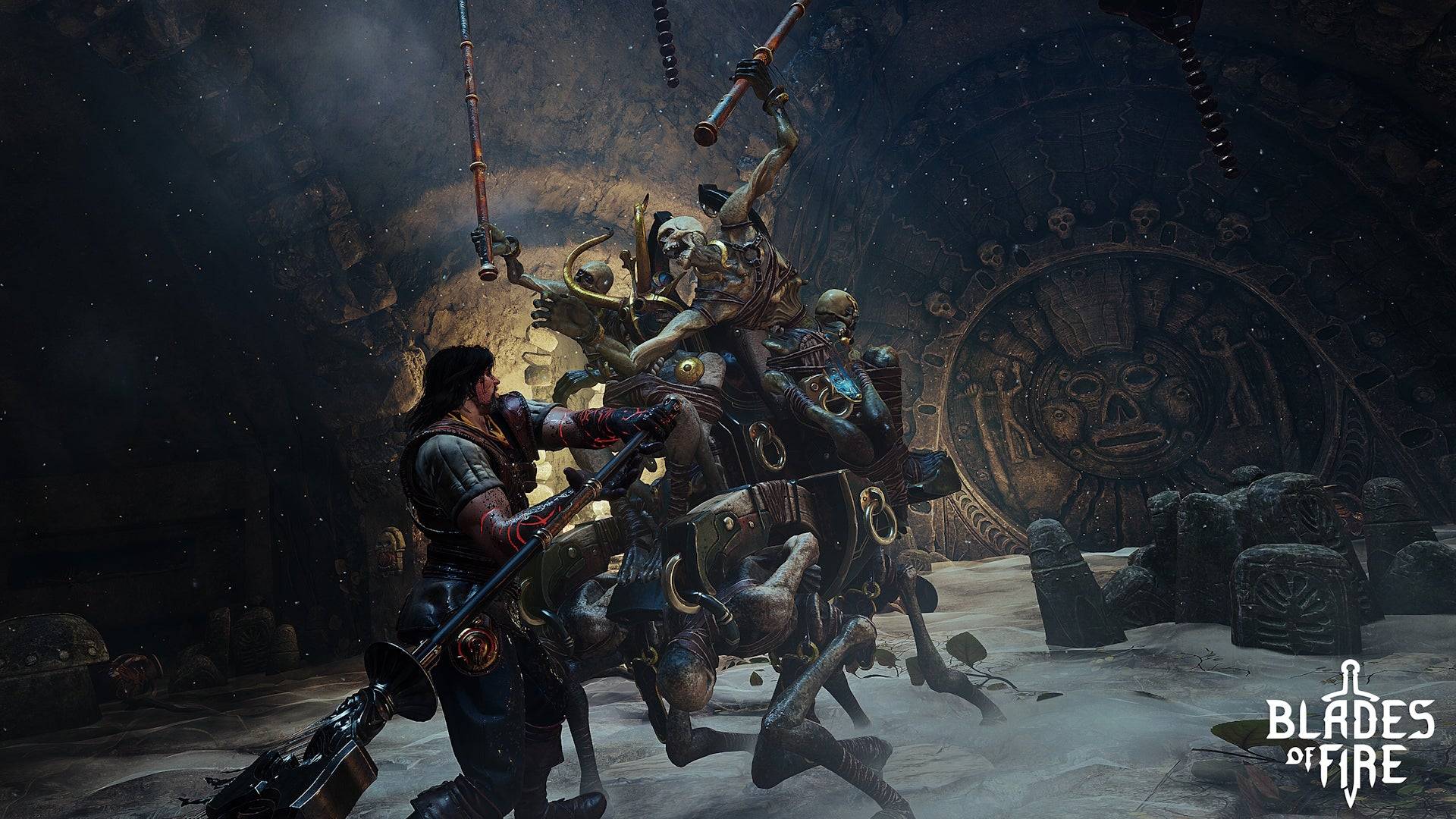
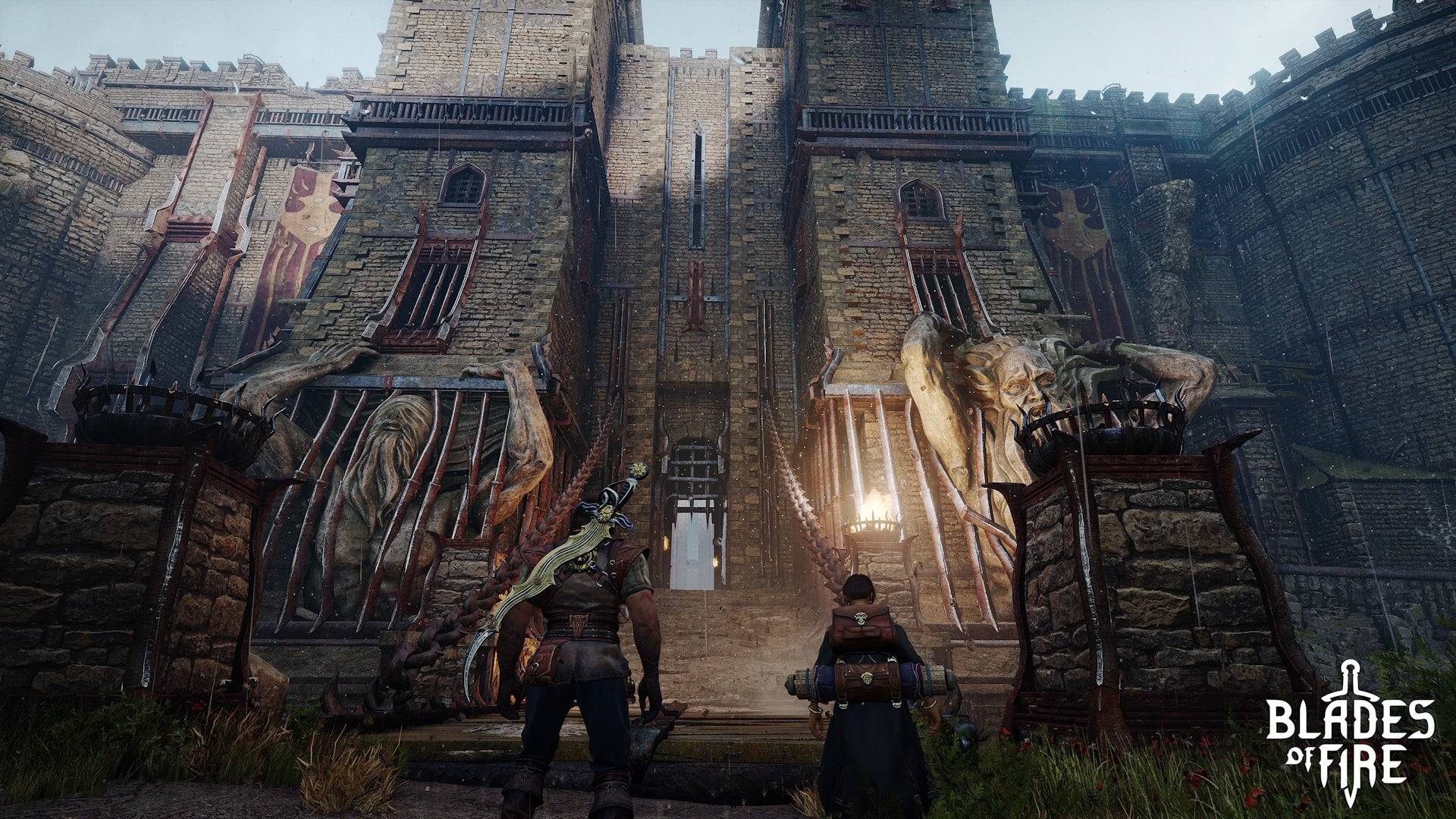 As the game's title suggests, weapons are central to Blades of Fire. Unlike most games, they require constant care; blades dull with use, reducing damage incrementally with each strike. Sharpening stones are essential to maintain your weapon's effectiveness, or you can switch stances since the edge and tip wear down independently, enhancing the feeling of handling tangible items influenced by your combat style.
As the game's title suggests, weapons are central to Blades of Fire. Unlike most games, they require constant care; blades dull with use, reducing damage incrementally with each strike. Sharpening stones are essential to maintain your weapon's effectiveness, or you can switch stances since the edge and tip wear down independently, enhancing the feeling of handling tangible items influenced by your combat style.
Similar to Monster Hunter, you'll need to find moments during battles to sharpen your sword. Yet, every weapon has a durability meter that depletes over time, regardless of maintenance. When a weapon breaks, you can repair it at an anvil checkpoint or melt it down to craft a new one, showcasing Blades of Fire's most significant and distinguishing feature: the forge.
MercurySteam's weapon crafting system is exceptionally detailed. Instead of discovering new weapons in the world, you start by designing them in the forge. You begin with a basic template, which Aran sketches on a chalkboard, then tweak and modify. For example, when crafting a spear, I adjusted the pole's length and the spearhead's shape, each choice impacting the weapon's stats. A longer pole extends the spear's reach, while the head's shape determines its effectiveness at slashing or piercing. Material choices affect weight, influencing stamina demands. This process fosters a genuine sense of crafting your weapon, culminating in naming your creation.
But the crafting doesn't end there. Once your design is complete, you must physically hammer out the metal on an anvil through an intricate minigame. You control the length, force, and angle of each hammer strike, aiming to match a curved line on the screen by arranging vertical bars. Overworking the steel results in a weaker weapon, so the goal is to match the line with minimal strikes. Your performance earns a star rating, affecting how many times you can repair your weapon before it's lost forever.
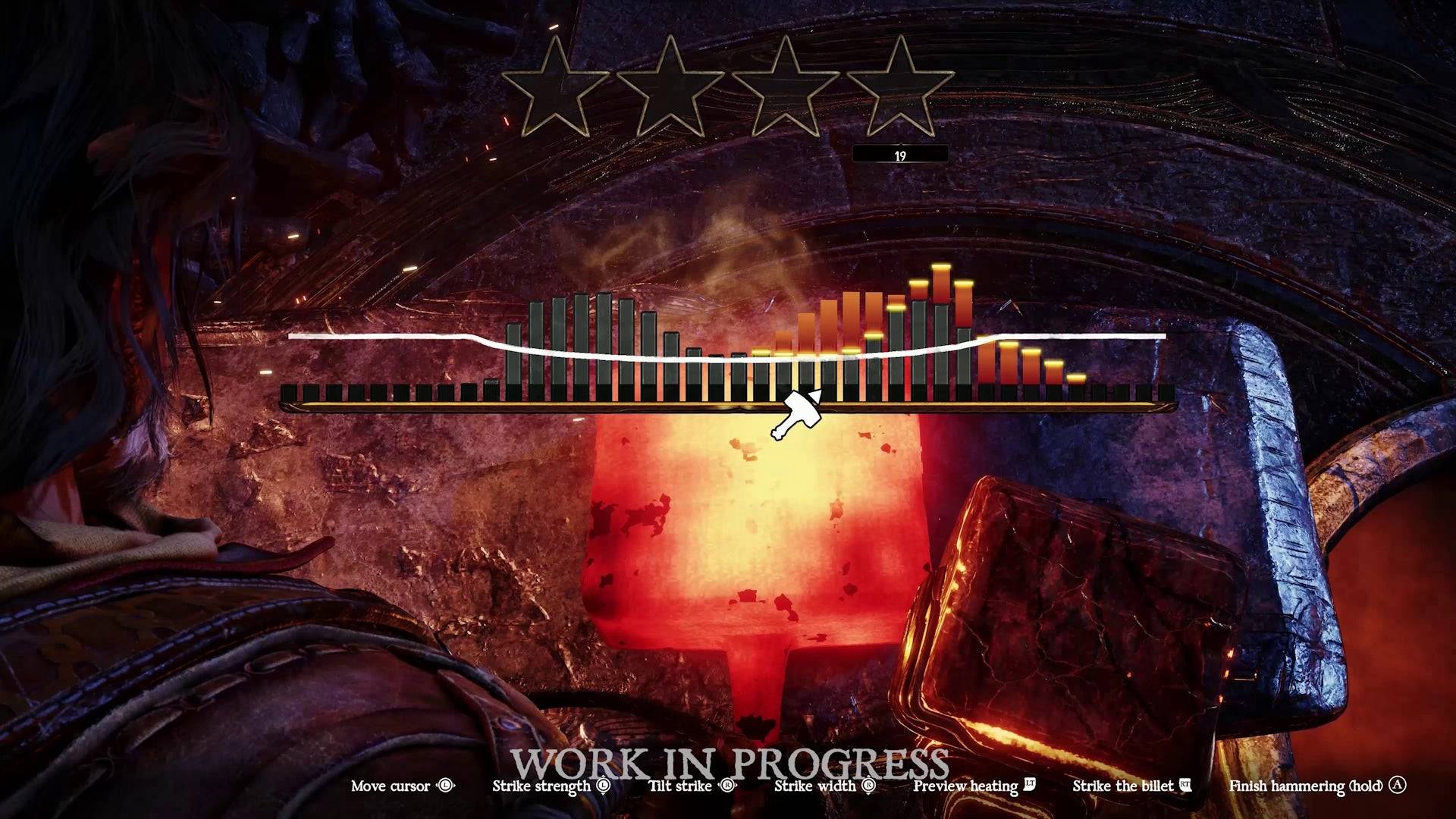 The forging minigame is a great idea that feels a little too obtuse. | Image credit: MercurySteam / 505 Games
The forging minigame is a great idea that feels a little too obtuse. | Image credit: MercurySteam / 505 Games
While the forge concept is innovative, adding a skill-based element to a typically menu-driven system, I found the minigame frustratingly unclear even after multiple tries. The relationship between hammer strikes and the metal's resulting shape was not immediately apparent. Hopefully, future iterations will include improvements or better tutorials to make this standout feature more accessible.
The forge's core concept extends beyond a three-hour demo. MercurySteam aims for players to form deep connections with their crafted weapons, intending for them to last the entire 60-70 hour journey. As you explore and find new materials, you can reforge your weapons to enhance their properties, ensuring they remain suitable for increasingly challenging encounters. This bond is reinforced by the death system; upon defeat, you drop your current weapon and respawn without it, though it remains in the world for you to recover. I'm eager to see how this mechanic unfolds over the full campaign and whether revisiting old areas might allow you to reclaim weapons from hours ago, reforging and reigniting your bond with them.
It's no surprise that MercurySteam has drawn heavily from Dark Souls and its sequels. This reflects FromSoftware's lasting impact on the action genre and Blades of Fire's status as a spiritual successor to Blade of Darkness, an early 2000s game developed by MercurySteam's founders and seen by some as a precursor to the Souls series. In many ways, the developers are building upon their past work, integrating advancements made by others during their hiatus from the genre.
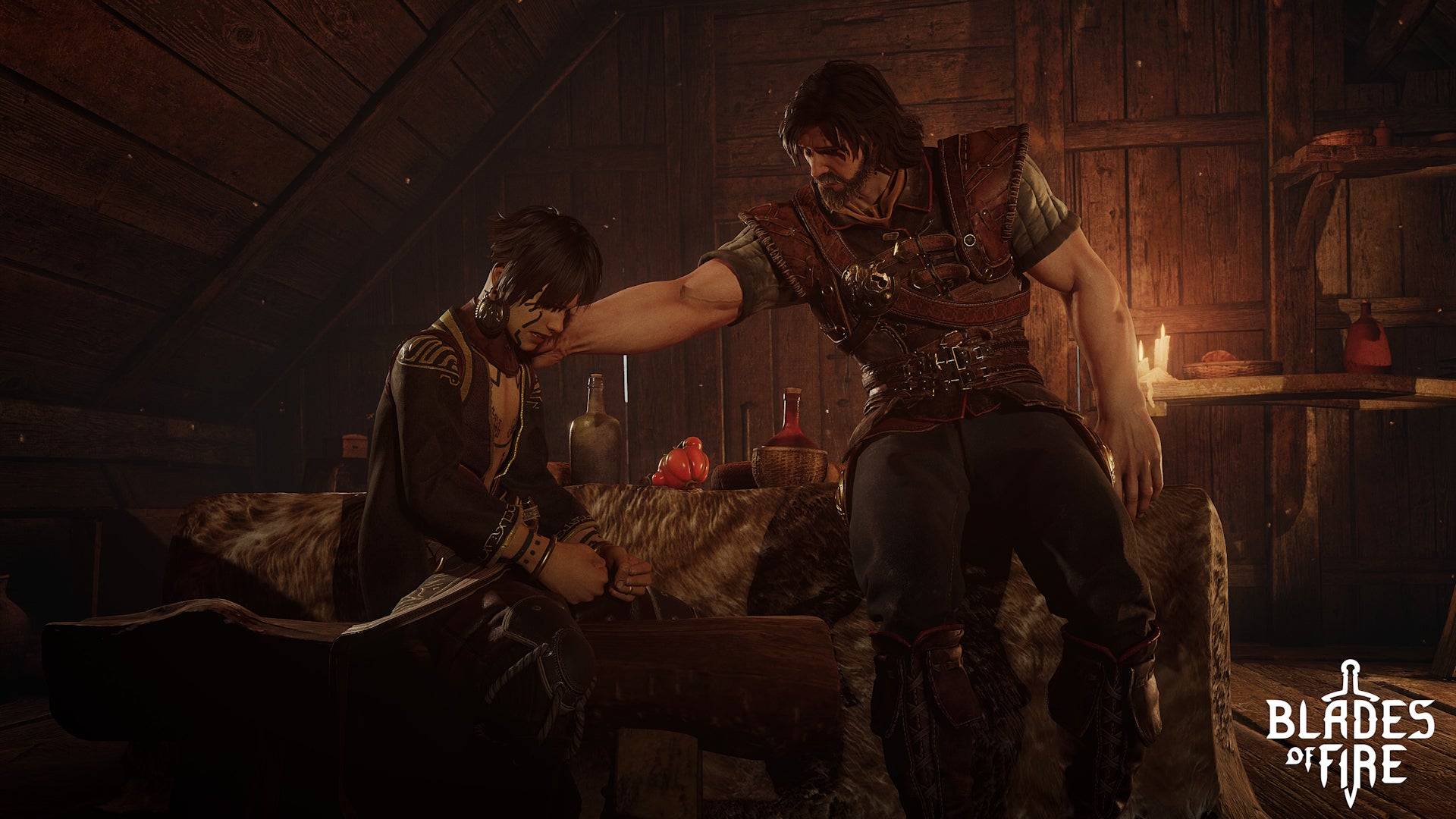 Aran is joined by his young companion, Adso, who can help solve puzzles and comment on the world's lore. | Image credit: MercurySteam / 505 Games
Aran is joined by his young companion, Adso, who can help solve puzzles and comment on the world's lore. | Image credit: MercurySteam / 505 Games
Throughout my playtime, I felt the pull of MercurySteam's influences—the brutal combat of Blade of Darkness, FromSoftware's innovations, and God of War's world design. Yet, these influences don't define Blades of Fire. Instead, they are reinterpreted as part of a broader tapestry of ideas, creating a unique recipe that distinguishes the game from its inspirations.
I do have some reservations. I'm uncertain whether the somewhat generic dark fantasy setting can sustain a 60-hour adventure, and encountering the same gatekeeping miniboss three times within three hours raises questions about the game's variety. However, the deep connection between your forged blades and the enemies you face has me thoroughly intrigued. In an era where complex and often obtuse games like Elden Ring and Monster Hunter have become mainstream successes, Blades of Fire has the potential to offer something truly fascinating to the gaming landscape.

